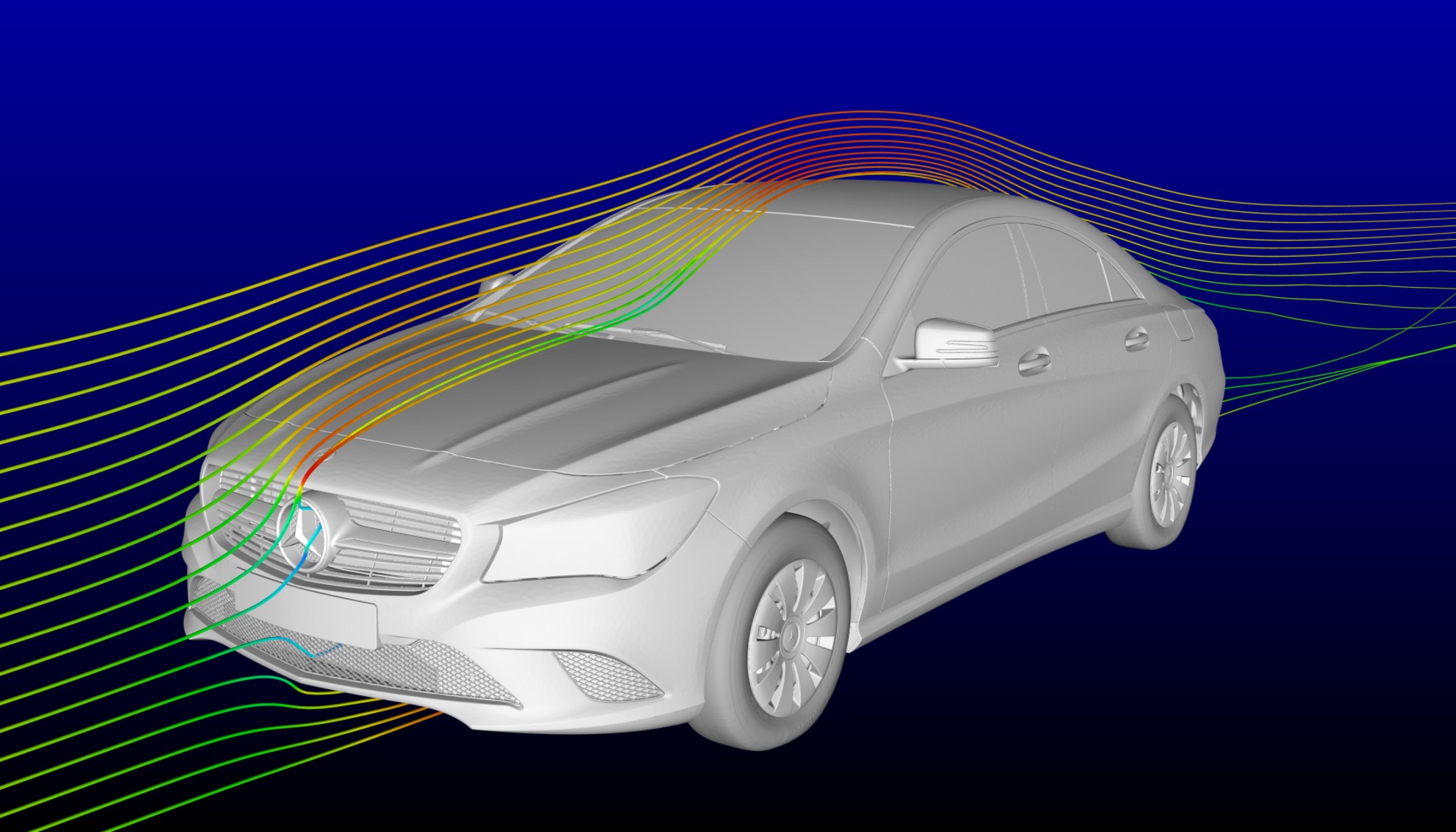Stuttgart. When it comes to wind resistance, noise levels, open-top driving comfort and anti-soiling measures, i.e. in all aerodynamic disciplines, models from Mercedes-Benz have taken the leading position in almost all vehicle classes for many years. This demonstrates that an exciting, emotional design and high aerodynamic efficiency are not contradictory. With the new aeroacoustics wind tunnel at the development centre in Sindelfingen, the company has now also taken the lead in aerodynamic testing.

For almost three decades, aerodynamic specialists at Mercedes-Benz have been breaking one record after another. “At present the brand’s models occupy the top position for aerodynamics in practically every vehicle segment”, says Prof. Dr. Thomas Weber, who is responsible for Group Research and Mercedes-Benz Cars Development. In its BlueEFFICIENCY Edition, the new CLA-Class has even established a new world record with a Cd figure of 0.22 and wind resistance x A of 0.49 sq. m. Weber: “This means that the CLA-Class is more streamlined than any other vehicle. Maintaining aerodynamic leadership is a major component of our MBC 2020 product strategy, which we are following systematically for all new vehicle models.”

When it comes to compact cars like the new A-Class (2012, Cd = 0.26), coupés such as the E-Class Coupé (2010, Cd = 0.24), saloons such as the E-Class (2009, Cd = 0.25), sports cars like the SL (2012, Cd = 0.27) and SUVs like the M-Class (2011, Cd = 0.32), vehicles in these segments have never before achieved such low Cd figures. The new S-Class is set to continue this trend.
“Highly sophisticated improvements to both the overall vehicle and detailed features contribute to this good performance,” says Dr. Teddy Woll, Head of aerodynamics/wind tunnels. Emotion meets efficiency: the more aerodynamically efficient a vehicle is, the lower its fuel consumption. Woll: “In the New European Driving Cycle (NEDC), improving the Cd figure by 0.01 already lowers CO2 emissions per km by one gram, by two grams as a function of mean on-the-road consumption, and at 150 km/h by no less than five grams of CO2 per kilometre.” Moreover, safety, comfort and the environment also benefit from the elimination of air turbulence. Because low levels of lift ensure good roadholding, while low wind noise is welcome to both passengers and pedestrians.
Models from Mercedes-Benz also take the lead in almost all segments when it comes to aeroacoustics. The new CLA will have the lowest level of wind noise in its segment.
New aeroacoustics wind tunnel: measurements up to 265 km/h
With the “large wind tunnel” in Stuttgart-Untertürkheim, Mercedes-Benz was the first automobile manufacturer to possess a wind tunnel – the first documented measurement was carried out there exactly 70 years ago, on 5 February 1943. With the new aeroacoustic wind tunnel at the development centre in Sindelfingen, the company has once again placed itself at the forefront of aerodynamic testing. The new wind tunnel, which will be taken into operation in mid-2013, follows the Göttingen design. This means that after the measuring stretch the air is directed back to the blower and again accelerated to up to 265 km/h. Before the air accelerated by the blower reaches the measuring stretch via a nozzle system covering 28 sq. m., it must be directed and smoothed to eliminate unwanted turbulence and eddies. This done using rectifiers and sieves. Extensive noise insulation measures are integrated to allow use as an acoustic tunnel where interior and exterior wind noise can be measured for the relevant test vehicle. Even at 140 km/h the air flowing through the measuring stretch is therefore as quiet as a whisper.
The centrepiece of the 19-metre long measuring stretch in the wind tunnel is the roughly 90-tonne conveyor belt/balance system with a turntable. The new wind tunnel has a 5-belt system to simulate the road. The conveyor belt/balance system is integrated into a turntable with a diameter of twelve metres. This means that the vehicles to be measured can also be subjected to an angled airstream to simulate cross-winds. The traversing system enables the engineers to position various aerodynamic sensors and microphones around the test vehicle with very high precision.